
If you are reading this article, it’s probably because you want to know how to disable Google AMP and turn AMP off for your Google searches. And you probably want to get rid of AMP because it’s annoying as hell, especially if you like to share links, and want to share the actual source link, not Google’s AMP link. The thing is, you can’t technically disable Google AMP, but you can get around it. So, here’s how to get rid of Google AMP.
Google’s AMP stands for Accelerated Mobile Pages. It’s Google’s way of having pages which might otherwise be bloated load quickly on your mobile device. But it’s also Google’s way of having millions of people unwittingly share Google’s URLs on Facebook, Twitter, etc., rather than the actual source’s URLs.
All your URLs are belong to us
The reason you can’t just ‘turn it off’ is because it isn’t actually ‘turned on’ in any real sense of the word. What is happening is that whenever you do a Google search from your mobile device, Google detects that it’s a mobile device, and reroutes your search request through their AMP servers, rather than through their regular servers, causing the link to the article, etc., to become a link to Google’s AMP system, and then rerouted through there to the actual target source.
Of course, this also means that millions of people who share links that they have found through Google (say, a news headline that you want to share on Facebook) are now sharing Google’s links, rather than the direct link.
And that, as Google might say, is a beautiful thing. For Google.
The Internet Patrol is completely free, and reader-supported. Your tips via CashApp, Venmo, or Paypal are appreciated! Receipts will come from ISIPP.
So, of course they don’t want you to be able to disable it. In fact, Google is well aware that users hate Google AMP and want to disable it. In fact they address that here, and they explain here that the URL derived via AMP has to retain its ‘google.com origin’.
The Problem
You do a Google search on your phone. You want to be able to go to the original source, but all of the results are now rendered via Google AMP.
Even when you go to a site from your search result, while you are seeing the article you wanted, the URL is still a Google AMP URL.
Now when you share a search result on, for example, social media, you are actually sharing the Google AMP result – which is, in fact, not even clear, as that fact is cloaked by the display of the source domain in the post on social media, even though it really goes through Google AMP.
Now, to address the unhappiness over this, Google has provided what they call the AMP header. You can click on the AMP header to reveal the actual URL of the story you are reading, and then you can click on that revealed URL to go to the actual source. So, two extra clicks, and however many extra seconds, just to get to the real source (when before AMP, you would automatically end up at – you know – the real source).
That is the only official, Google-approved way to ‘get around’ Google AMP.
But there are other ways around AMP. And here they are.
How to Essentially Disable (Get Around) Google AMP in your Google Searches
NOTE: METHOD #1 BELOW (USING ENCRYPTED.GOOGLE.COM) HAS NOW BEEN DISCONTINUED BY GOOGLE :~( WE ARE LEAVING IT UP SO PEOPLE WHO MAY HAVE BEEN USING IT CAN KNOW THAT GOOGLE DISCONTINUED IT
Method #1 to Get Rid of Google AMP – Use a Different Google Starting Point
Instead of starting your Google search from the search bar, go to encrypted.google.com, and type your search in the resulting search bar. This will force your search to be conducted via Google’s encrypted servers, rather than their AMP servers.
AMP-free Results Using Encrypted Google Server
Method #2 to Get Rid of Google AMP – Change Your Default Search Engine
If you are willing to do without Google at all, perhaps the simplest method of dealing with Google AMP is changing the default search engine in your mobile browser from Google to something else, such as Duck Duck Go, Bing, or even Yahoo.
In iOS you do this by going to your Safari settings:
And then changing the default search engine:
No AMP!
To change your default search engine in Google Chrome on an Android phone, from within Chrome go to Settings, and you will see the option to change your search engine there in the Settings window. You can choose from Yahoo, Bing, Ask, and AOL.
Method #3 to Get Rid of Google AMP – Use a Mobile Browser that Allows User Agent Switching
Another way to get rid of Google AMP is to trick your browser into thinking that it is not a mobile browser, but rather a desktop browser. This is because Google AMP is specifically for mobile (remember that AMP stands for Accelerated MOBILE Pages).
The way that a browser identifies itself to the world (and to websites which it is browsing) is by something called the “User Agent”. Typically a mobile browser User Agent includes the information about the mobile device on which it is being used. Browsers that are being used on desktops obviously do not by default announce themselves as being on a mobile device.
This is useful to know because it means that if you can stop your mobile browser from self-identifying as being on a mobile device, then Google AMP won’t kick in.
In other words, if you can spoof your mobile browser’s User Agent to appear to be a desktop browser, Google AMP will go away (although some websites will figure out that you are spoofing, and serve up the mobile version anyways, but they are in the minority).
While neither Safari for iOS, nor more recent versions of Chrome for Android, offer the ability to switch your User Agent, there are other browsers which do.
For iOS, we can confirm that both [Page no longer available – we have linked to the archive.org version instead] and iCab Mobile Browser offer the option of switching your User Agent (note that iCab’s default search engine is DuckDuckGo, so if you choose to use iCab, you will have to switch it back to Google).
In Opera Mini, it’s super-easy. You just open up the settings area and it’s right there at the bottom of the screen.
To change your User Agent to desktop with iCab go to Settings and select Tools > Browser ID.
By Default iCab Identifies Itself as Safari (iPhone)
You have to go to a second Browser ID setting screen to actually change the Browser ID in iCab.
But once you are there you have a lot of options!
Now Google thinks that our iPhone is an OSX device!
The downside of using a different browser in iOS is that there is no way to tell your mobile to use a different default browser. So you will always have to open the non-default browser first and conduct your search from within the browser.
Now, if you are on an Android phone, we have heard really good things about Dolphin browser for Android, and Dolphin easily lets you switch your user agent (here are their directions for switching your Android user agent to Desktop).
There is also an Android app called User Agent Switcher for Chrome, however it doesn’t work if you are on Android 7 or later.
These are the ways to get around Google AMP entirely. If instead, you just want to be able to post original source links, but don’t otherwise care about ditching Google AMP, then you can do the Google AMP two-step, where you click on the Google AMP header to get to the source link, then click on the source link to go directly to the source article.
The Internet Patrol is completely free, and reader-supported. Your tips via CashApp, Venmo, or Paypal are appreciated! Receipts will come from ISIPP.








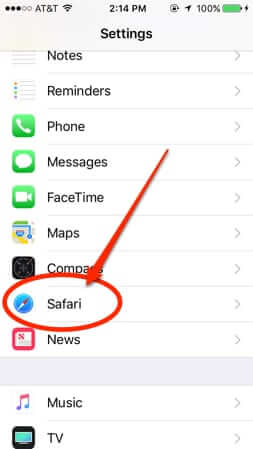
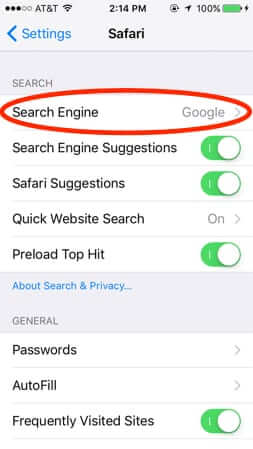
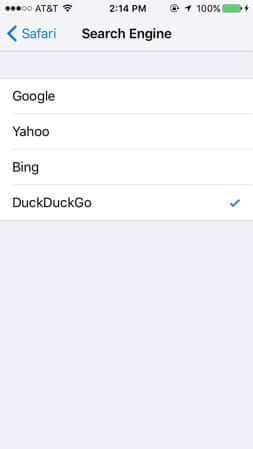

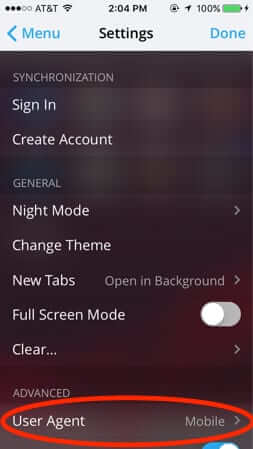

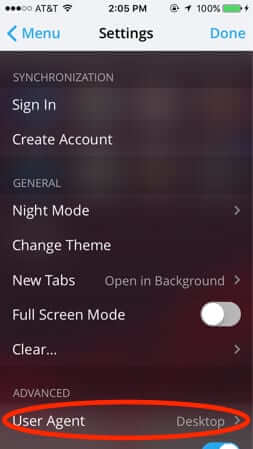
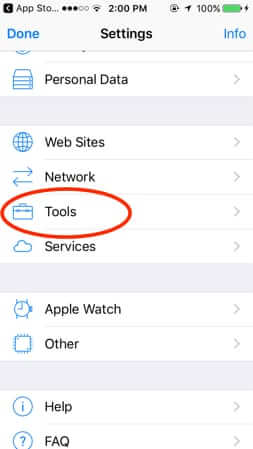
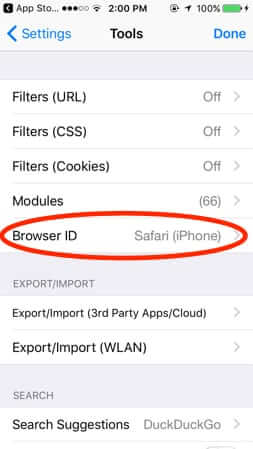
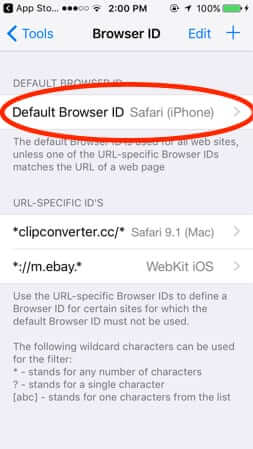
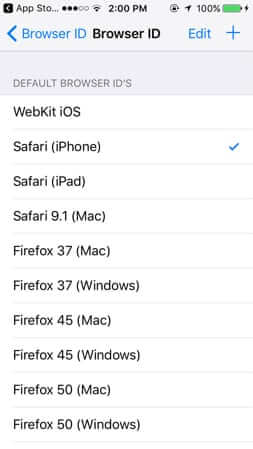
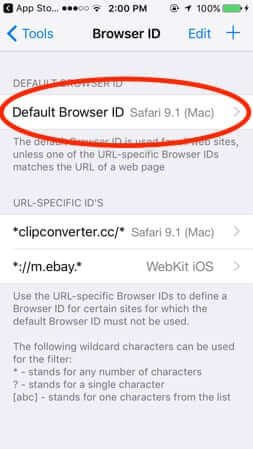







This page NEEDS to be updated. Google search shows this article being from October 18th 2019, which is obviously wrong. All of this stuff is from 2017. And encrypted.google.com hasn’t worked since April of 2018 when Google disabled it. They said it was because they merged the security features of the “encrypted” site in with the normal site. Which I think is bull. We all know why they REALLY did it. To prevent people being able to get around Google’s AMP garbage.
Personally, I’ve been using Duckduckgo as my main search. It’s not the best search and it’s certainly not like the OLD Google…. but it sure as hell is FAR better than the current Google search of today. The state of Google search now is extremely laughable. How the hell did Google search go from being one of the best searches around—to being the absolute WORST ever??? Guess that’s what happens when you only think of yourself and your stacks of Benjamins instead of the quality of your service and your users.
Google, it’s time to break your oversized ass up along with your best bud… Facebook! Time to start enforcing regulations on their ass! (Like that will ever happen -rollseyes- ).
Hi Bruce! Thank you for bringing this to our attention! The page was updated in October, but it obviously wasn’t a substantive modification. However, we have now removed the part about encrypted.google and replaced it with information about using another search engine. Thanks again!
TIP
It would be nice to see AMP blocker addons for mobile browsers that automatically edit the URLs to strip the AMP crap before going to the site. It’s possible to do that yourself in the location bar.
Method #1 opens up to 404 – Not Found. I just switched to another website browser instead.
Christopher has it exactly right. In Safari for iOS, do your search as normal. Then, click and hold the “refresh” button on the right of the search bar. This gives the option “Request Desktop Site”. AMP free results!
This has changed in iOS. Now, “Request desktop site” is under the drop-down menu when you touch “aA” to the left of the search bar.
Thanks for the tip.
First I had to enter encrypted.google.com and do a manual search. After that I was able to chose that as the default chrome search engine!
Thank you so much for the encrypted.google.com solution! I was getting fed up of Bing’s awful algorithms.
It’s scary to think that whatever Google decides to do, so many people have to put up with their decisions.
i was looking for info on why i get Error 500 when i attempt to open one of these “AMP” articles.
Actually user-agent switching in Chrome for Android is there, it is called “Request Desktop Site” anf it changes the user-agent to Chrome on Linux.
This is some serious messed up shit.
They even deleted the comment section, and left you no way to even know that the site you are on have commented section.
Also i heard that Google is forcing sites to run on AMP, with “rewards” such as putting their site upper in search results.
Is Google know what they’re doing?
It seems that happy days of “free” Internet is over . . .
I have to agree with kenjacq’s comment below: I also unwittingly set up Google AMP for my blog and once I deleted the app, I’m now getting a crap-load of 404 errors on my site and can’t seem to find anyone that knows how to fix it. Doh!
If anyone has a solution for that, please do let me know.
It looks like Google is pushing AMP eveb harder now. As of a few days ago, a few sites no longer display tge “Google Header.” Do far they do have (at the very bottom of the page) a link that does the same thing. Hopefully these tips will work.
It seems that Google is pushing this even harder now. As of a few days ago, a number of sites don’t have the “Google Header” any more. So far all of them have had a link, on the bottom of the page, that does the same thing though. Really frustrating. Hopefully these other trick will work.
And what if you are a website publisher who unwittingly enabled AMP and then later “saw the light” and want it removed?
There does not seem to be a way that I can find to remove AMP page version search results from Google after having once enabled them via a plugin. When the plugin is deactivated, the AMP pages return 404 errors – even worse…
Friggin unbelievable.
AMP is so controlling and weird and this article kept not coming up because clearly google doesn’t want to actually LINK to it. i had to type it and the link icon didnt do anything. i hope someone sues for HIT/READER theft or hijacing against our will. gross google.
I have to say… It’s the people who set up AMP that must listen to their visitors. Not corporate nonsense. WordPress.com allows it… My site is a WordPress.com hosted site. I won’t set up AMP. Ever. I hate it, too. I am not just a blogger, I’m a computer enthusiast since my first computer in 1982, a TRS-80 Color Computer who shares their experience. It’s annoying to go take extra steps to get to the content I need. Thanks for this post.
Pardon my French but..
F* AMP!
Such a navigational nuisance for the way I browse.
Mercury browser gives you option to change browser ID to virtually any browser available.
In iOS Safari, did you try Request Desktop Site? I assume that changes the User-Agent and the reloaded page would be AMP free. Still a pain and doesn’t “disable” it, but would get you to the source site.
True; we felt it basically was no different than clicking on the AMP header (same number of steps, and have to do it on a per-search basis, each and every time). But yeah, we probably should have mentioned it for the sake of completeness. Nicely spotted!